RD-E: 1801 Square Plate Torsion
This example concerns a torsion problem of an embedded plate subjected to two concentrated loads. This example illustrates the role of the different shell element formulations with regard to the mesh.
Options and Keywords Used
- Q4 shells
- T3 shells
- Hourglass and mesh
- Boundary conditions (/BCS)
The boundary conditions are such that the three nodes of a single side and the two middle ones are blocked, while the others are free with respect to the Y axis.
- Concentrated loads (/CLOAD)Two concentrated loads are applied on the corner points of the opposite side. They increase over time as defined by the following function:
F(t) 0 10 10 t 0 200 400 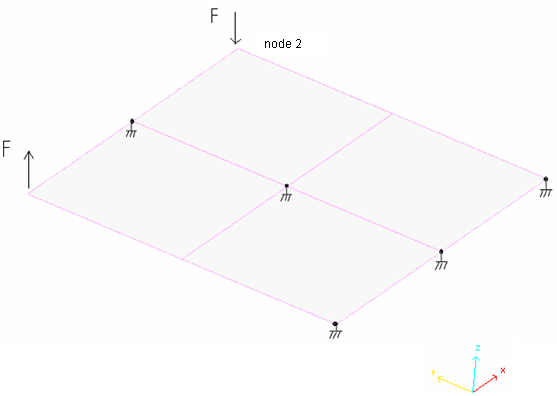
Figure 1. Boundary Conditions and Loads - Element formulation (Properties)
Input Files
- 4Q4
- <install_directory>/hwsolvers/demos/radioss/example/18_Square_plate/Torsion/4Q4/.../TORSION*
- 8T3
- <install_directory>/hwsolvers/demos/radioss/example/18_Square_plate/Torsion/8T3/.../TORSION*
- 8T3 inv
- <install_directory>/hwsolvers/demos/radioss/example/18_Square_plate/Torsion/8T3_inv/.../TORSION*
- 2Q4-4T3
- <install_directory>/hwsolvers/demos/radioss/example/18_Square_plate/Torsion/2Q4-4T3/.../TORSION*
Model Description
Units: mm, ms, g, N, MPa
- Material Properties
- Initial density
- 7.8x10-3
- Young's modulus
- 210000
- Poisson ratio
- 0.3
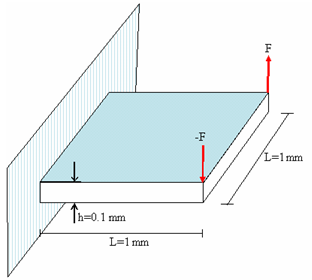
Figure 2. Geometry of the Problem
Model Method
- Mesh 1
- Two quadrilateral shells and four triangular shells (2Q4-4T3)
- Mesh 2
- Four quadrilateral shells (4Q4)
- Mesh 3
- Eight triangular shells (8T3)
- Mesh 4
- Eight triangular shells (8T3 inverse)
- QBAT formulation (Ishell =12)
- QEPH formulation (Ishell =24)
- Belytshcko & Tsay formulation (Ishell =1 or 3, hourglass control TYPE1, TYPE3)
- C0 and DKT18 formulations
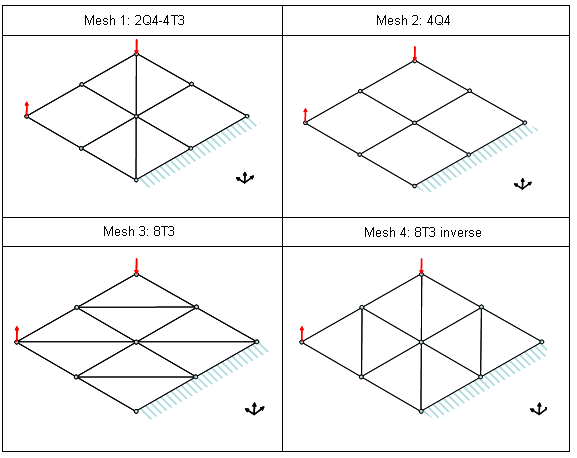
Figure 3. Square Plate Meshes
Results
Curves and Animations
- the use of different element formulations for each mesh
- the different types of mesh for a given element formulation
- absorbed energy (internal and hourglass)
- vertical displacement of the node under the loading point
The following diagrams summarize the results obtained.
Energy Curves / Comparison for Element Formulations
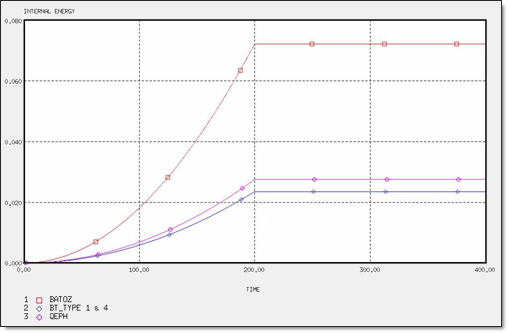
Figure 4. Internal Energy for 2 x Q4 and 4 x T3 Elements
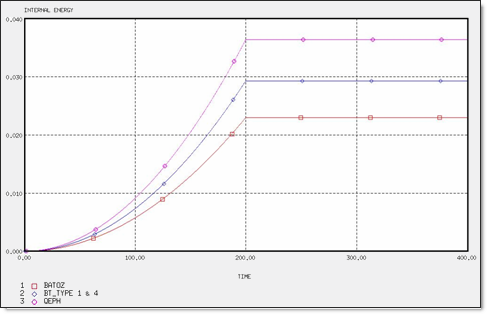
Figure 5. Internal Energy for 4 x Q4 Elements
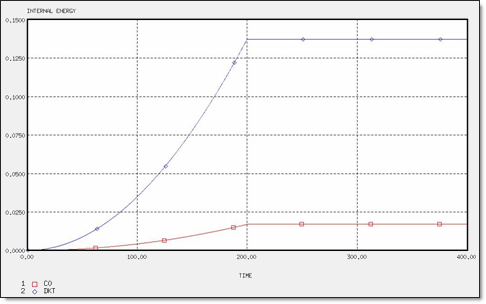
Figure 6. Internal Energy for 8 x T3 Elements
Energy Curves / Comparison for Mesh Definitions
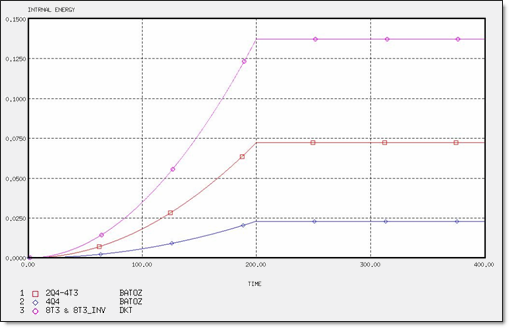
Figure 7. Internal Energy for Different Meshes
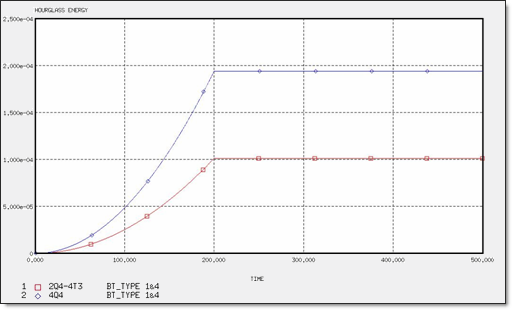
Figure 8. Hourglass Energy for Different Meshes
| 2 Q4- 4 T3 | 4 Q4 | 8 T3 | 8 T3 Inverse | |||||||||
|---|---|---|---|---|---|---|---|---|---|---|---|---|
| QEPH | BT_TYPE1 | BT_TYPE4 | BATOZ | QEPH | BT_TYPE1 | BT_TYPE4 | BATOZ | DKT | C0 | DKT | C0 | |
| IEmax | 2.74x10-2 | 2.35x10-2 | 2.37x10-2 | 7.21x10-2 | 3.64x10-2 | 2.93x10-2 | 2.97x10-2 | 2.30x10-2 | 1.37 x10-1 | 1.69x10-2 | 1.37x10-1 | 1.69x10-2 |
| HEmax | -- | 1.01x10-4 | 1.03x10-4 | -- | -- | 1.94x10-4 | 1.98x10-6 | -- | -- | -- | -- | -- |
| DZmax | 1.75x10-3 | 1.78x10-3 | 1.78x10-3 | 1.21x10-2 | 2.42x10-3 | 2.95x10-3 | 2.97x10-3 | 2.30x10-3 | 1.44x10-2 | 1.69x10-3 | 1.44x10-2 | 1.69x10-3 |
Conclusion
- For the 4Q4 mesh, the results obtained using QBATOZ and QEPH are similar. BT elements are too flexible and are not significantly influenced by the hourglass formulation, due to the in-plane mesh.
- For triangular meshes, the DKT element is able to bend much better, the co-element being too stiff.
- The mesh with both Q4 and T3 elements may not comment like the other two, as one part uses the triangle elements employed in Radioss.